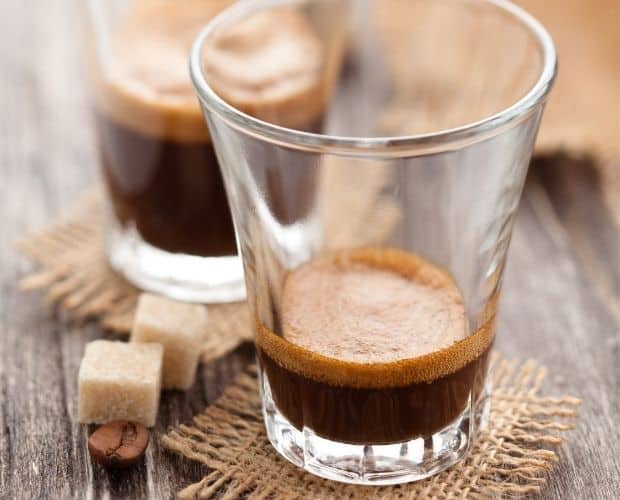Last Updated on December 20, 2023
If you’ve poked around your Starbucks app long enough, you’ve surely come across a customization option for your espresso that offers a “ristretto” or a “long shot.”
You may not know what these mean. You will in a moment.
Ristretto and long shot refer to the way the espresso is pulled for your drink. The main difference between a ristretto and a long shot is that ristretto uses less water and a shorter extraction time to create a more concentrated espresso, while a long shot does the opposite to create a less concentrated espresso with more volume.
You can order a straight espresso shot as a ristretto or a long shot (or neither, in which case it will just be pulled the standard way). You can also ask Starbucks to use either of these for your flat white or your latte, even while using the app.
Knowing these terms that maybe aren’t in the average coffee drinker’s vocabulary can help you get the taste experience you want when you visit your local coffee sop.
Let’s further explore the difference between a ristretto and a long shot by beginning with a little history.
The history of espresso
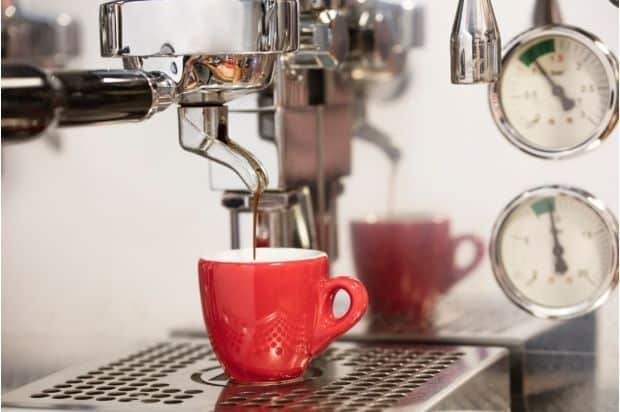
Traditional espresso and its offspring—the ristretto and the long shot—can’t be brewed in a simple drip coffee machine. You need a specialized device that runs hot water under pressure through the coffee grounds. The first such machine was invented way back in 1884 by Angelo Moriondo.
Moriondo’s hulking machine was steam-powered and could only brew in bulk. He built just a few prototypes reserved for his own chain of coffee houses in Italy. Several years later, one of his competitors patented a refined version of the machine. Those sales helped launch an international coffee sensation: espresso and all its variants. Italy’s coffee culture is imitated in coffee houses around the world to this day.
So what makes these types of espresso so different? How do they taste?
Differences between a ristretto and a long shot
A ristretto and a long shot are both espresso, but a ristretto uses less water and a shorter extraction time to create a more concentrated shot than a regular espresso. A long shot uses more water and a longer extraction time to create a less concentrated coffee.
What is a Ristretto Shot?
A ristretto is a concentrated espresso shot, using less water and often a finer grind than standard espresso. Ristretto comes from the Italian word for “restricted.” That doesn’t mean you have to be 18 years old to drink it. In this case, it just means a restricted amount of water is pushed through the coffee grounds for a shorter time than with a regular shot.
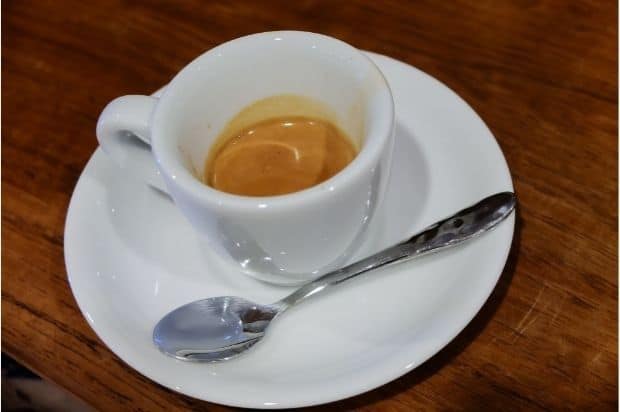
What is a long shot?
A long shot is an espresso pulled with more water, resulting in a larger volume and a diluted taste compared to standard espresso. So it’s the opposite of a ristretto. Here, extra water is used for the brew and it is pulled for a similar or slightly longer duration than an espresso. A long shot can also be known as a long espresso, lungo, caffe lungo, or café allongé.
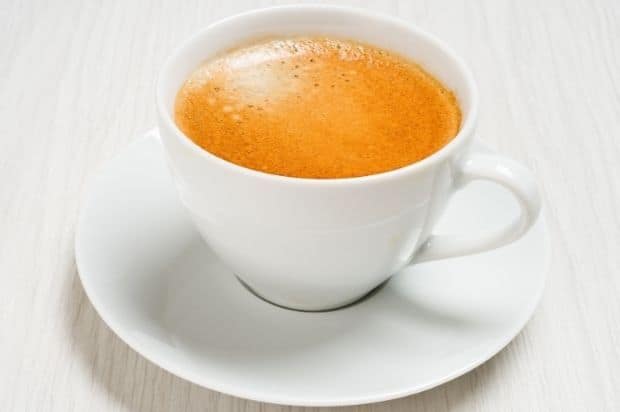
Double espresso vs. long shot
Many coffee lovers confuse a long shot with a double espresso. Long shots have a more diluted, mild flavor. Double espressos are thicker and a bit denser. The latter tends to hold up better in complicated mixed drinks because of the robust base taste, so the double shot often forms the base of popular drinks like the cappuccino or flat white.
In brewing terms the difference is that a double espresso is two shots of espresso in a 1:2 ratio of coffee to water, while a long shot is a single espresso pulled with a larger quantity of water. You might see the same volume in the cup for a double espresso and a long shot, but they will taste significantly different.
Long shots are a good option for sipping straight and enjoying the ever-changing flavor notes.
Americano vs. long shot
The difference between an Americano and a long shot of espresso is that an Americano dilutes the espresso with hot water after it is brewed. A long shot injects that extra water volume during the brewing process. The water in an Americano plays no role in the extraction of the coffee, but in a lungo, all the water is involved in extraction.
Is anything longer than a long shot?
You can make a shot as long as you want. These extra-long shots may not have any special name, but people do brew coffee with a much higher water-to-grounds ratio. In fact, former World Barista Championship finalist Matt Perger has been known to infuse a whopping 300 ml of water through just 18 grams of coffee—about a 1:17 ratio, like your typical cup of coffee. How does it taste? Reviews vary. However, if you are experienced with the flavor profile of your favorite coffee beans, you can play around with water proportions. Maybe start with a little less than 300 ml of water.
Ristretto vs long shot in detail
When you compare a ristretto to a long shot, the small changes in how they’re created add up to a big difference in flavor profile.
Brewing process
In many ways, ristretto and lungo coffees are at opposite ends of the brewing process spectrum. This helps highlight the different flavors of the beans.
Water volume
One of the defining characteristics of pressure-brewed coffee is the amount of water used. That determines pull times, which beans and roasts develop the best flavors, and even what kind of grind to use.
Ristrettos are made with about half the water of a single shot of espresso, or around 15 ml. Meanwhile, long shots use about three times the water of a ristretto, or 45 ml. Because of this, long shot coffees have more volume and are often served in larger glasses.
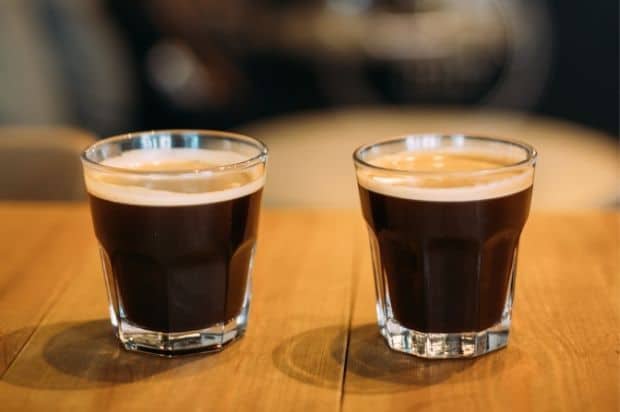
Extraction time
Ristretto tends to have a shorter extraction time. At a typical 15 seconds, it’s extracted in half the time of an espresso.
Meanwhile, long shots use a full extraction time of at least 30 seconds. However, this can vary depending on the beans, the roast, and personal taste. Lungos are as much an art as a science.
Should you use different beans for ristretto and long shot?
Lower acidity beans, typically grown at lower altitudes, are a good pairing for ristretto shots. They pack in a lot of other light aromas and sweeter flavors. You’ll only need a hint of acid to balance the coffee’s profile, and quick ristretto pours keep that acid in check.
Denser beans, such as the ones grown at high altitude, are acidic. It’s harder to extract flavors from them, but lungo’s long pulls are up to the challenge.
What about different roasts and grinds?
Any roast style can be used successfully. A lot of this comes down to personal taste. However, medium-dark to dark roasts tend to be popular with both styles of brewing. Some people also use ristretto pulls as a way to work through a purchase of lower quality or over-roasted coffee. This style of brewing tends to make the most of less refined beans.
Lungos need a less fine grind to draw out their maximum flavors. However, it’s definitely time to bring out your finely ground coffee when making a ristretto.
How they taste
Flavor, smell, crema and caffeine all combine into two very different drinking experiences.
Flavor
Coffee flavors infuse in hot water in a certain order. First you get the light, mellow, volatile compounds. These are highlighted through brewing methods such as cold brew. After that, acidity enters the water. Sweet notes quickly follow, and finally the characteristic bitterness. It takes a certain amount of time to reach the full bitter stage of extraction.
Ristretto has a simpler flavor profile due to the short pull time and its coffee to water ratio. It’s rich in light tastes and aromatics, but has little bitterness or deep chocolate flavors.
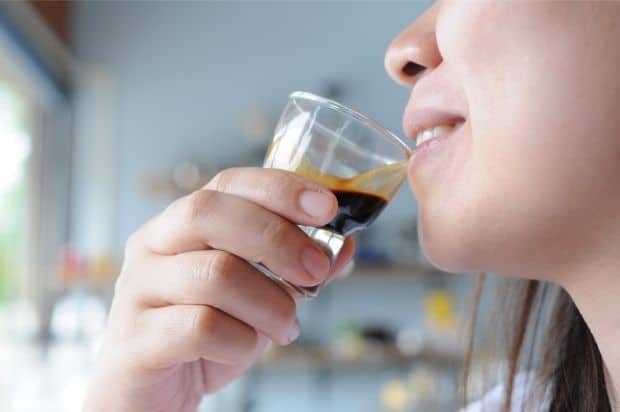
Long shots have a flavor balance similar to drip coffee. The light floral notes can easily be overwhelmed by darker flavors, bitterness, and acidity.
Aroma
Ristresso has highly fragrant aromas. They are concentrated and fruity-sweet, tempting you to inhale deeply as you sip. Lungos echo their flavor profile with darker aromas and an intriguing smoky depth.
Acidity
In coffee, acidity is a distinct flavor from sourness. You want a hit of acid to cut through the sweet. However, unpleasant sour tastes indicate something went wrong during preparation. Espressos and long shots rely on acidity for their flavor profile. Ristrettos will have only a whisper of it on the back end.
The amount of acidity in your long shot is influenced by the roast used. Light roasts may have more acidity. This goes hand in hand with their floral and fruity notes. The same beans in a darker roast may have lower acidity, with more bitter notes as a trade-off.
Bitterness
Ristrettos may have intense flavors and a concentrated body, but little bitterness comes through thanks to the short pull times.
Long shots have more bitter notes. How much more? It depends on how long they’re brewed and what kind of coffee is used. If you keep pulling the shot after most of the flavors have been extracted, you’re only tapping into extra caffeine. Caffeine is associated with negative flavors. It is very bitter and can quickly throw off the flavor profile.
Crema
Ristretto has a thinner crema layer. However, because long shots have so much more overall fluid, their crema layer is less noticeable when drinking. A ristretto is often served in a tiny glass cup that looks a bit like a shot glass, so the crema is highly visible.
Caffeine content
Ristrettos have a full coffee flavor, but their short times mean less caffeine than espressos. Long shots may have slightly more caffeine than espresso. This can vary depending on how long they’re pulled.
How to pull the shot
Pulling a ristretto
Ristretto shots are brewed under pressure for a shorter length of time than a regular shot. You’ll also use a lower coffee-to-water ratio than you’ll find used for espressos. Aim for 15 ml, or half of a single shot, to the same amount of grounds. Although you do only need a short pull, watch the clock as you do it. Under-extracted ristrettos can taste quite off as they’re missing so many of the balancing flavors expected from coffee. If you’re sure you timed it right but it’s still sour, try a finer grind.
- Choose a fine grind for your coffee beans.
- Fill the espresso machine’s reservoir with cold, filtered water. Distilled and hard water could damage your brewer.
- Wait for the water to heat to the right temperature. Most espresso machines indicate this with a light that goes from red to green.
- Put 14 grams of coffee in the filter and tamp them in. You may need to experiment with how firmly to tamp them down.
- Put the prepared filter back in the machine.
- Brew the coffee for 15 seconds, aiming for about 15 ml or half an ounce of ristretto.
Pulling a long shot
Now on to the lungo. It takes patience to coax coffee’s full potential into a significantly larger volume of water. You’ll need 45 ml, or three times the water of a ristretto. Long shots are pulled much more slowly. That typically means 30 to 40 seconds. Shorter pull times can work well with coarser grinds or beans that you know are quite bitter. Time these pulls carefully. You want to infuse all the coffee’s rich taste. However, if you over-extract, you add too much caffeine and throw off the flavor balance.
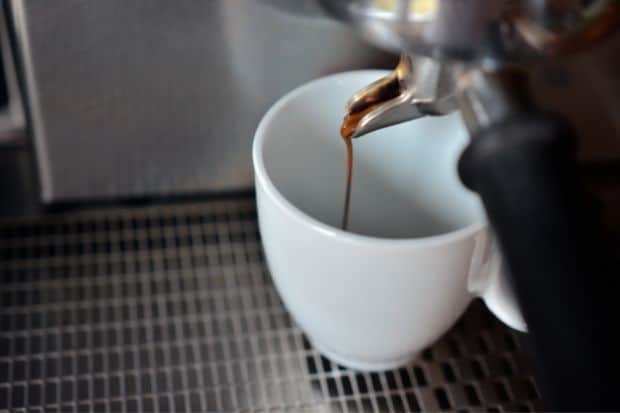
Lungo coffees use the same method as ristrettos with three key differences:
- You can choose less finely ground coffee.
- Extract the coffee for up to 40 seconds, depending on the taste.
- You’ll end up with about about 45 ml or 1.5 ounces of long shot.
Which is stronger?
It depends on what you mean by “stronger.”’ Coffee strength means different things to different people.
We think of coffee strength as concentration. Ristrettos have a more concentrated flavor, and certainly more aromatics and acidity. Lungos will be less concentrated, but might carry a stronger taste of deep notes.
If it’s caffeine your after, long shots have noticeably more caffeine.
Which is harder to brew?
If you can brew an espresso, you can pull a ristretto or a long shot. They aren’t significantly more complicated on the technical side. However, ristrettos do have less margin for error on pull times. Sometimes, even two seconds is enough to add excessive acidity to these delicate drinks.
On the taste side of things, you’ll need to experiment. Measure your coffee carefully, watch your pull times, and taste. You may have to tweak the brew procedure to get your ideal flavor balance.
A symphony of flavors
Coffee is a worldwide favorite beverage because of its amazing versatility. No two varieties of beans taste the same. Meanwhile, the different roasts can coax out everything from flowering fruit notes to bitter chocolate.
The standard espresso shot has a balance of flavors and a hearty kick of caffeine. However, coffee drinkers are like the beans themselves—they come in a wide variety. Because of that, people have innovated different ways to prepare coffee.
Ristretto-style drinks are a good choice for those who want their caffeine thick and sweet. People who want the flavor balance of espresso, but in a lighter drink, may opt for a long shot. And now that you know the difference between long shot and ristretto, you’ll know what to order.
Meanwhile, caffeinated mad scientists will push the limits of the long shot and extend it by over a cup of water. Genius or insanity? You’ll need to pull out your espresso machine to find out.

